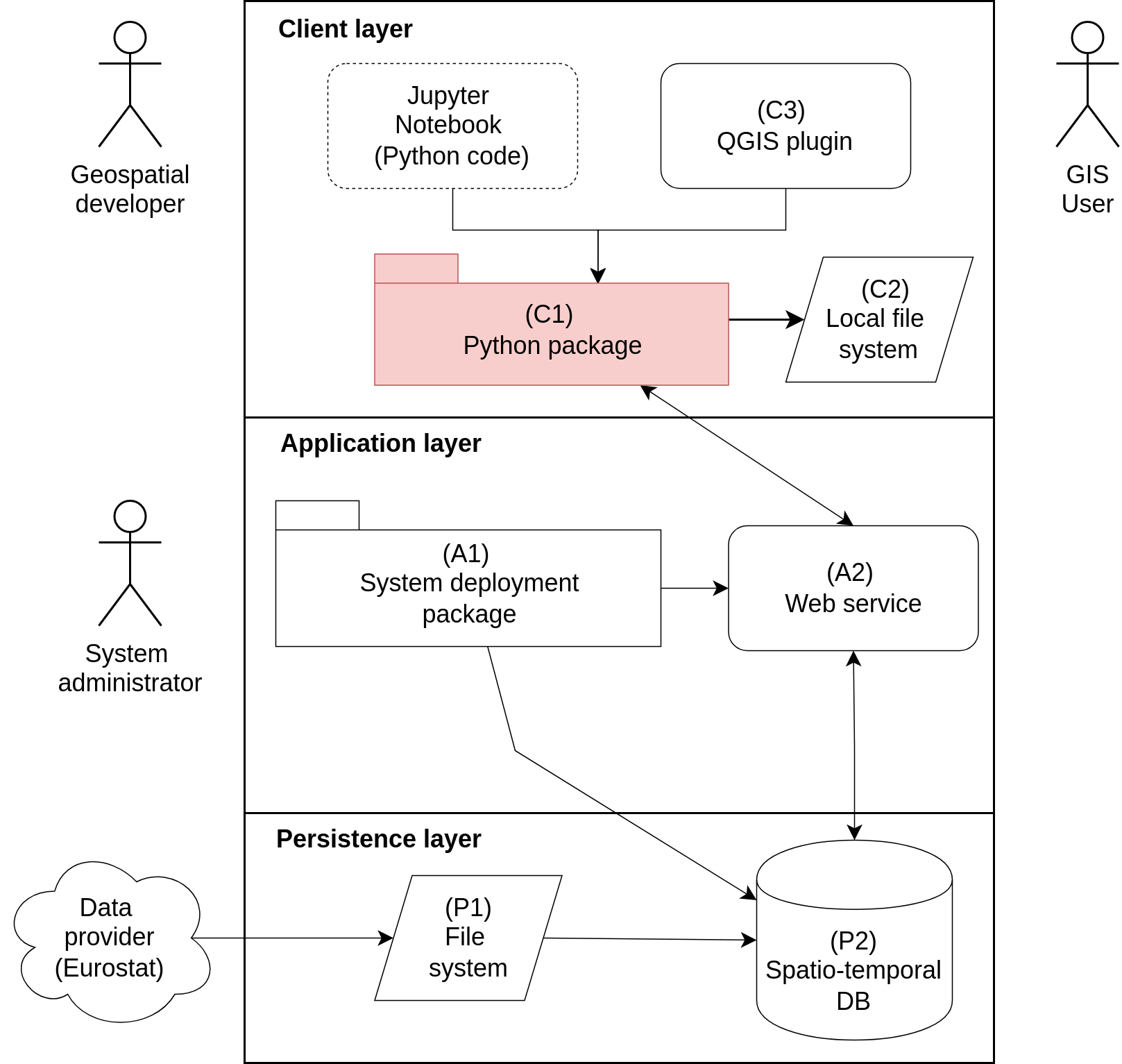ST_LUCAS Python API#

ST_LUCAS Python package (C1) provides communication between the web
server (A2) and the users’ clients through API. The package
implemented in the Python 3 programming language consists of three
modules: (1) request: to create a request by specifying spatial,
temporal, attribute or thematic filters; (2) io: to retrieve
harmonized LUCAS data provided by the web service (A2) based on the
submitted request, and to store the retrieved data to the user local
file system (C2) in a specified data format; (3) analyze: to
analyze the received harmonized LUCAS data - LUCAS land cover classes
aggregation and nomenclature translation.
Installation#
Install st_lucas from the Python Package Index (PyPI).
python3 -m pip install st_lucas
Usage#
from st_lucas import LucasRequest, LucasIO
request = LucasRequest()
request.bbox = (4504276, 3020369, 4689608, 3105290)
lucasio = LucasIO()
lucasio.download(request)
lucasio.count() # number of downloaded LUCAS points
Go to tutorials for complete overview.
Contributing#
The library has been developed and used by a group of active community members. Your help is very valuable to make the package better for everyone. Check also our open issues.
